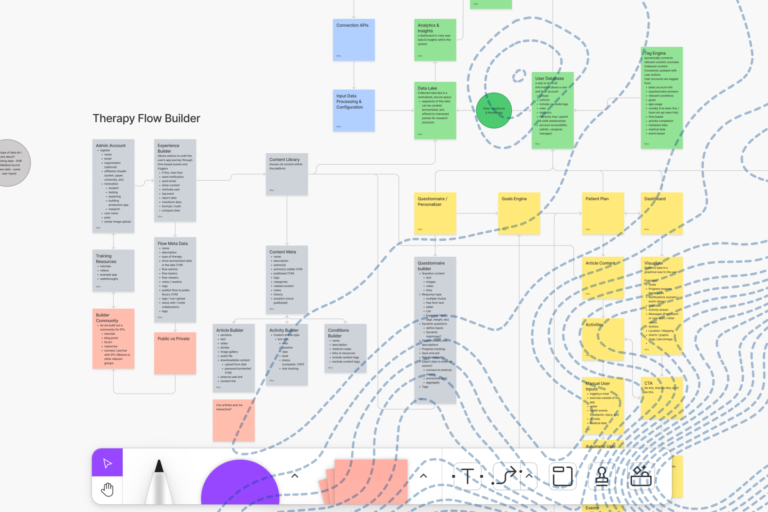We’ve all witnessed companies launch noteworthy digital innovations. Onlookers will read compelling headlines, watch promising stock figures, and get excited. Understandably so. What’s more exciting than solving a long-existing issue with a beautiful arrangement of custom-made code?
When a company presents technology at the right time, it almost seems like a “duh!” moment.
“Of course, they needed to adopt AI in that department.”
“Why wouldn’t they have built an app for that?”
The reality is, the decision to create and implement custom-made software is anything but simple. A great deal of deliberation likely occurs before innovations come to fruition. Besides, digital innovation can make it to the market and still fall short. McKinsey reports that 70% of complex, large-scale digital transformations are unsuccessful. Tailor-made technology can change an entire industry for the better, but that doesn’t mean businesses should get software-happy.
So no, custom software development isn’t always the best business solution. As exciting as new tech is, there’s often a more simplistic route to take. On the contrary, custom-made software might be precisely what an organization needs to flourish.
So how do you choose the right path for your business to follow? Here are a few questions to answer before starting a custom software development project.
1. What problem are you trying to solve?
Determine the main problem you want to solve. Is there a communications issue? Does your current strategy fail to satisfy employee or customer needs? Maybe there’s a common pain-point in the industry you’re looking to finally resolve? Try figuring out what your objective is.
To help identify your goals, layout the critical success factors (CSFs) of the project. In other words, what elements would the project need for it to be considered an accomplishment? Pinpoint what your main intention is to avoid getting lost in the shuffle. While it’s tempting to try and solve a bunch of unrelated issues, that mindset can leave your projects feeling aimless and inconceivable.
2. Is this a software problem?
Once you’ve established your goals, determine the most practical solution, not the fanciest. It’s easy to jump to tech for a plausible solution, but is software the answer? We all love technology, but you might be solving an organizational issue, not a digital one.
If custom software truly can solve the problem, that doesn’t mean it’s the only answer. Rather than allocating the resources to develop new software, always consider other avenues first. Is this department delivering the right material? Could a new hire fix the problem? Sometimes the low-level tech solution is the best one.
“Tailor-made technology can change an entire industry for the better, but that doesn’t mean businesses should get software-happy.”
Whatever the issue may be, make sure software is the best option for you. Custom software should have the power to solve your problems, not just display them on a pretty dashboard.
3. Does this software already exist?
So you’ve determined the issue can be resolved by software after all. Have you made sure the software doesn’t exist in the market? After all, it’s almost always more cost-effective to buy a piece of software than build one from scratch.
The build-vs-buy decision is a fundamental step in finding your software solution. Maybe a product on the market is too high-level for your situation, or worse, only solves a fraction of your issues. If that’s the case, you may need to consider some degree of custom development.
Even so, you may not need to start from ground zero — for instance, you might opt to use a buildable software platform that can shapeshift to fit your specific needs. Platforms like Salesforce can provide a basic structure that developers can build around to create a custom solution designed specifically for the unique needs of an individual company. The buildable model saves time and resources by leveraging a range of out-of-the-box functionality instead of reinventing the wheel.
If none of the above applies, there’s a good chance you’re in truly uncharted territory. Customized software development is an ideal solution for companies that are trying to build a truly disruptive product.
4. Does this have to be done now?
Time sensitivity is an extremely relevant factor. If you have the flexibility, take your time and work out some of the kinks in your idea. When you’re ready to approach a software development team, it will be a lot more clear what needs to happen to get your idea up and running. Don’t rush if there’s no reason to.
“ When digital transformation is done right,” it’s like a caterpillar turning into a butterfly. But when done wrong, all you have is a really fast caterpillar. ”
– George Westerman | Principal Research Scientist of MIT
(Source: Inc.com)
If you have a tight (but feasible) timeline, custom software can still work for you. Due dates can be limiting, but you can find outside resources to help you beat the clock. The right custom software development project could be expedited in 90 days if you play your cards right.
That said, if you find yourself in a situation where your business is facing immediate limitations, you might be better off looking to existing software – even as a temporary measure.
5. Will the project be worth it?
Will the end-result will make for a lasting effect on your company? Is it likely this product will have been worth the time and resources allocated to it? Consider the scope of the issue and ask yourself if a custom software development project is the appropriate solution.
Nadya Sultanik, an Arcweb architect, believes innovation is an indicator of a successful software development project. She suggests asking yourself these key questions:
“Will the end product be an innovative disruptor? If you had it instantly, will it be a game-changer for the company? Figure out if the benefits will outweigh the risk.”
– Nadya Sultanik | Arcweb Architect
Sometimes, an idea can look amazing on paper and not work out in practice. Rapid prototyping and the appropriate testing will help to measure whether a venture will be worth the resources. After testing out a model, you might decide the project isn’t worth it after all. (On the other hand, you could realize this project will bring the exact competitive edge your company needs.)
6. Do you have a good support system for this project?
To start a custom software development project, you need a solid foundation on all fronts. The amount of financial support you have will indicate project quality, so prepare a reasonable budget. Don’t let yourself lose sight of ROI and get carried away.
If you don’t have the power to control the budget, make sure your rationalization for this project will be good enough for the people who do. Convincing the C-Suite will be half the battle but, if your plan is solid, they will help you along the way. Champions of innovation are essential to your success. You’ll want as many individuals in the company backing the project as you can get.
Lastly, don’t forget about who will be using the software. Be sure that end-users will take kindly to the changes; digital transformations can be overwhelming. Try to identify if a change is really something the end-users will want or be willing to experience.
Sign up for HealthWire to get the latest health tech headlines delivered to your inbox
Custom software development is a serious investment that shouldn’t be taken lightly. If you’re going to embark on such a journey, make sure you’ve thought it through. While passion is imperative to success, letting emotion alone direct your project won’t work. Using real-life figures to assess the validity of an idea will help you identify the right pathways and make smart, information-based decisions.
If and when you’ve chosen to follow this path, state your goals, assess the risks, and make it happen! Not sure about where to begin? Still have questions about next steps? Drop us a line!
Want more product strategy news? Make sure to subscribe to Product Hacker and follow us on Twitter.





